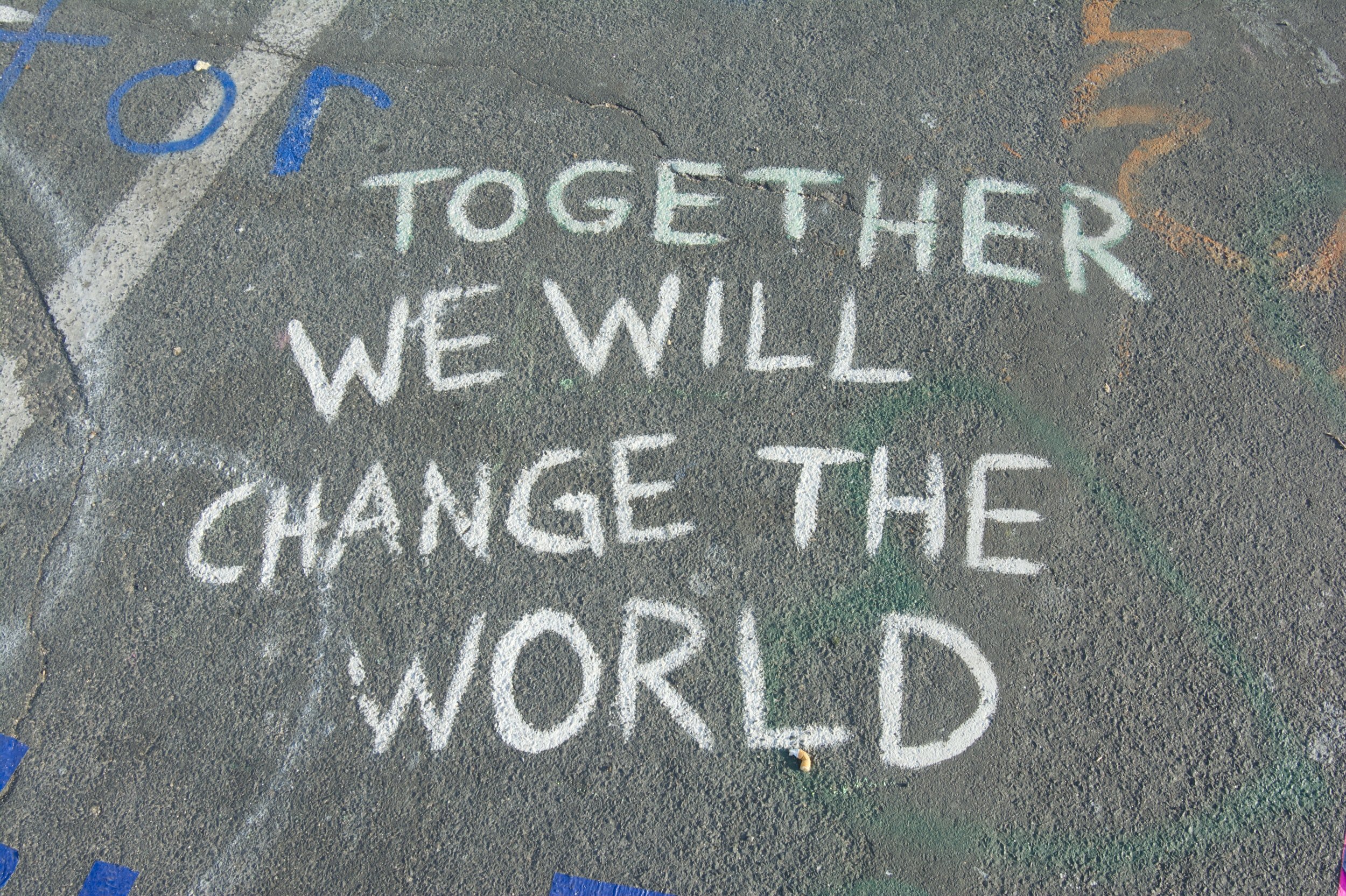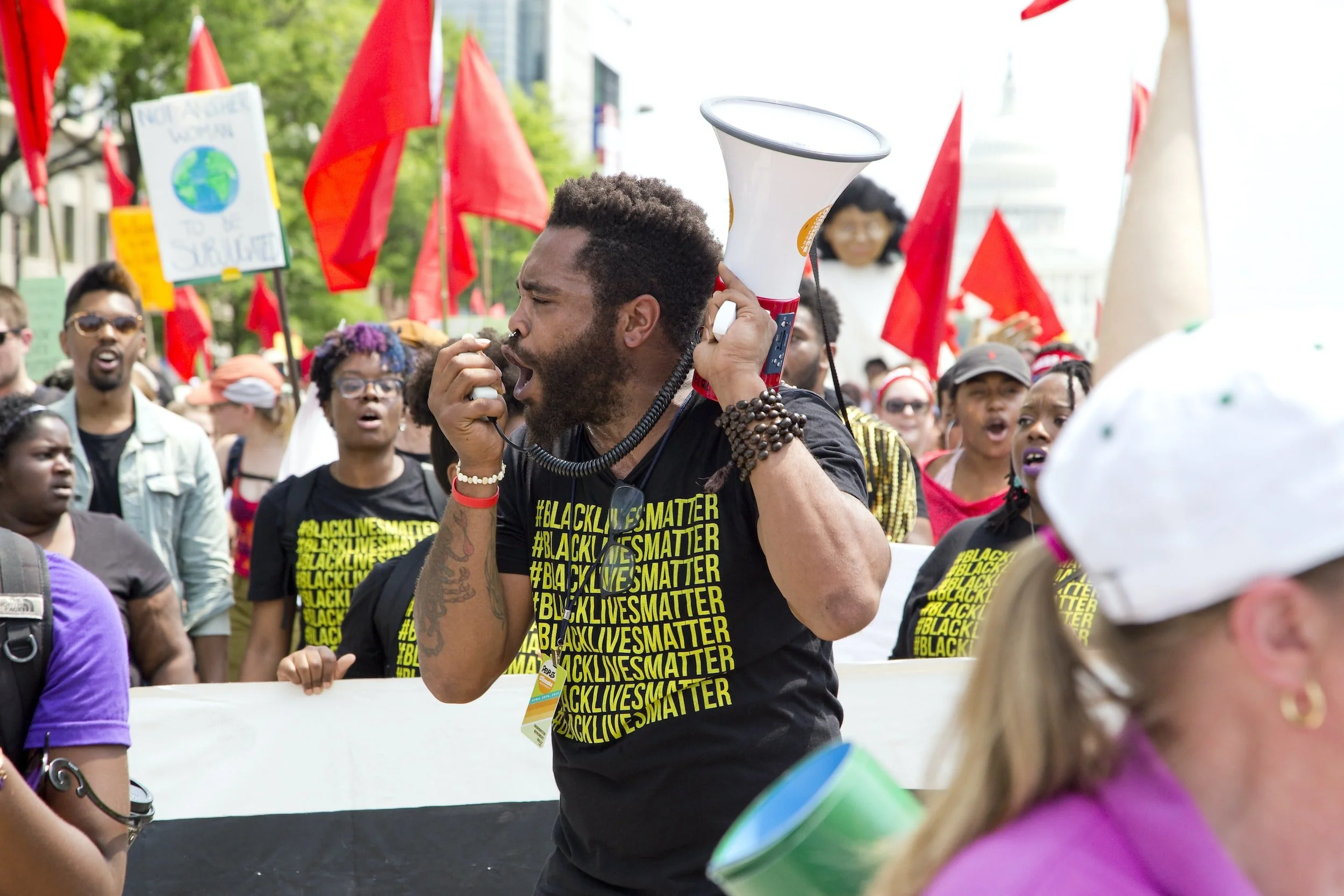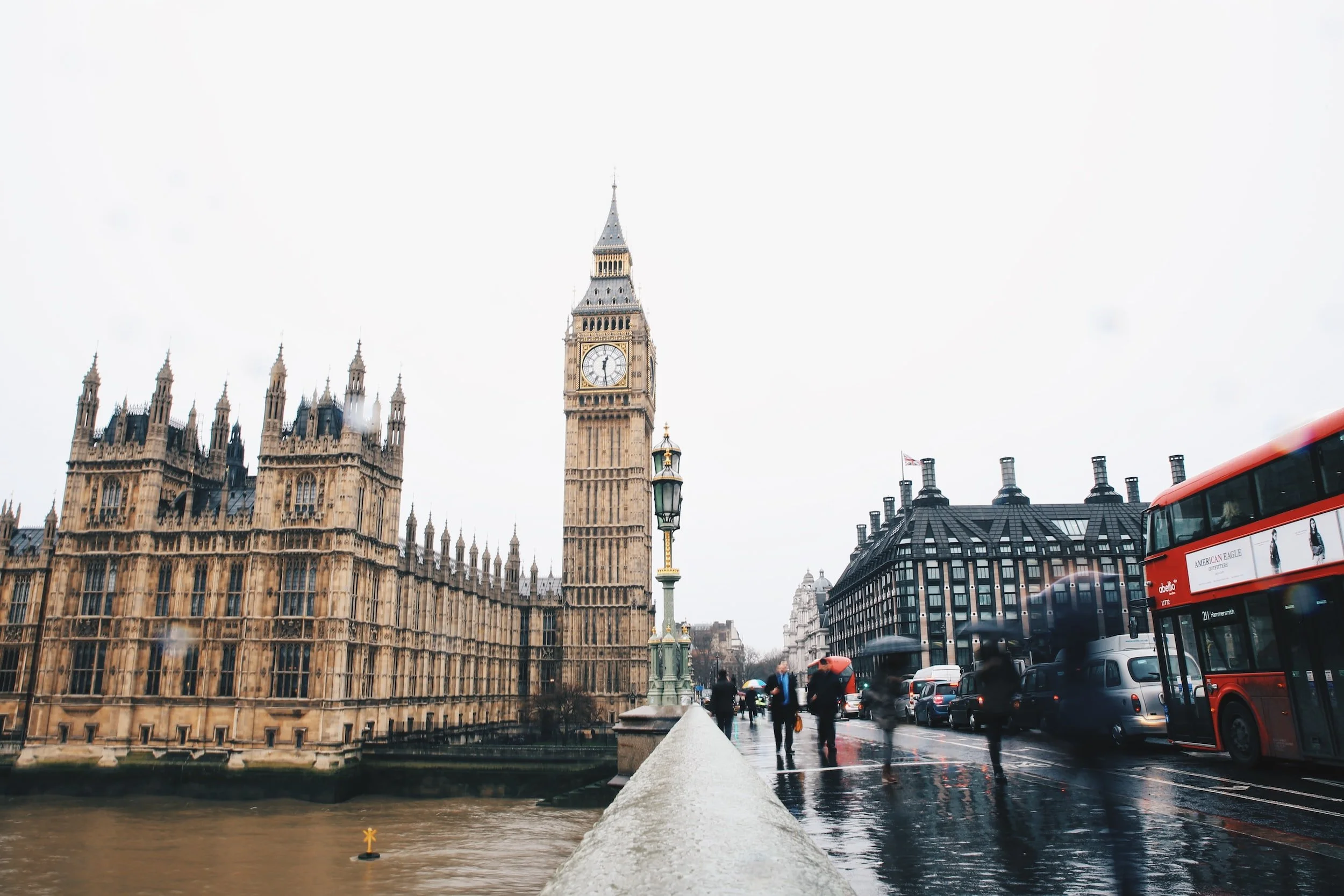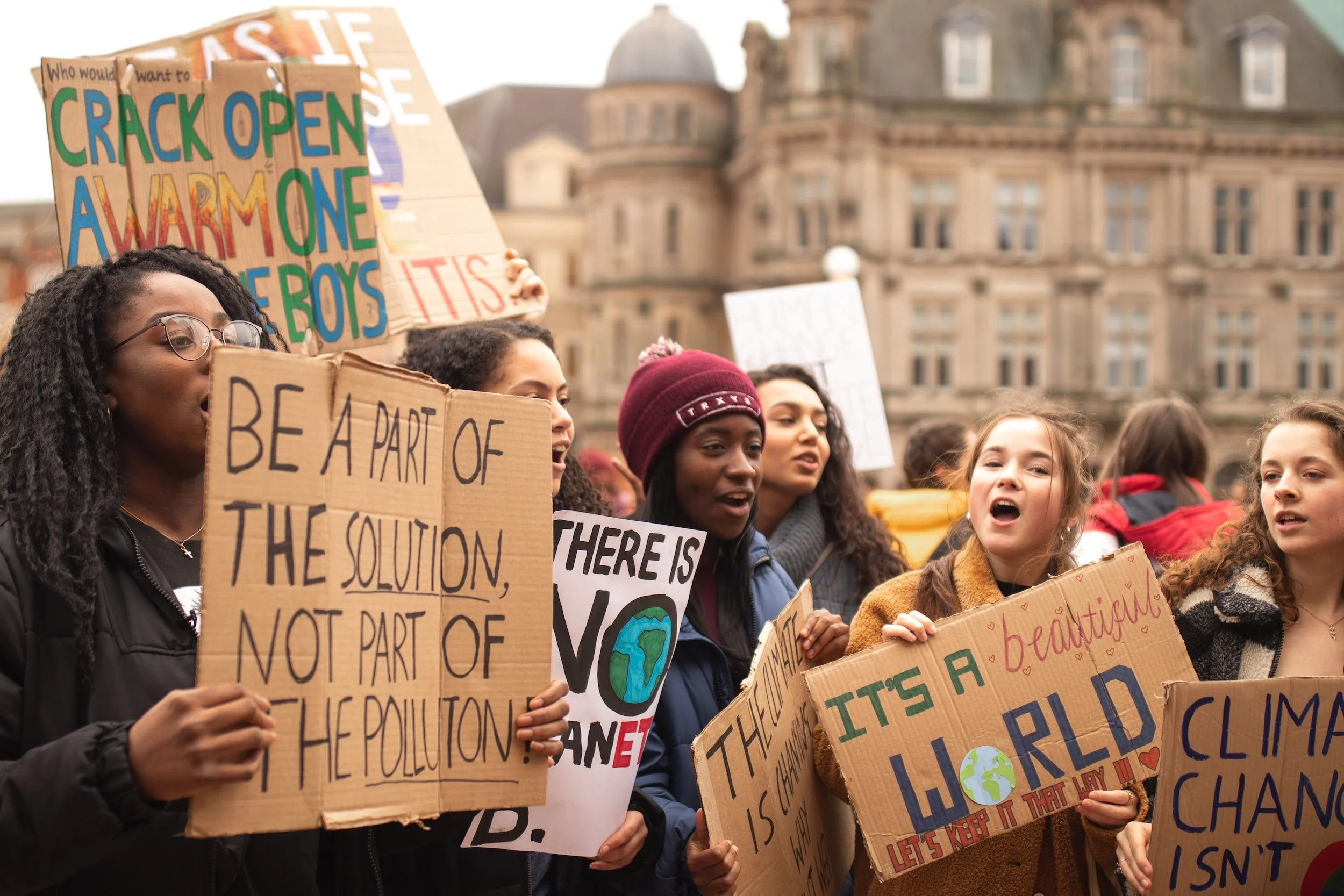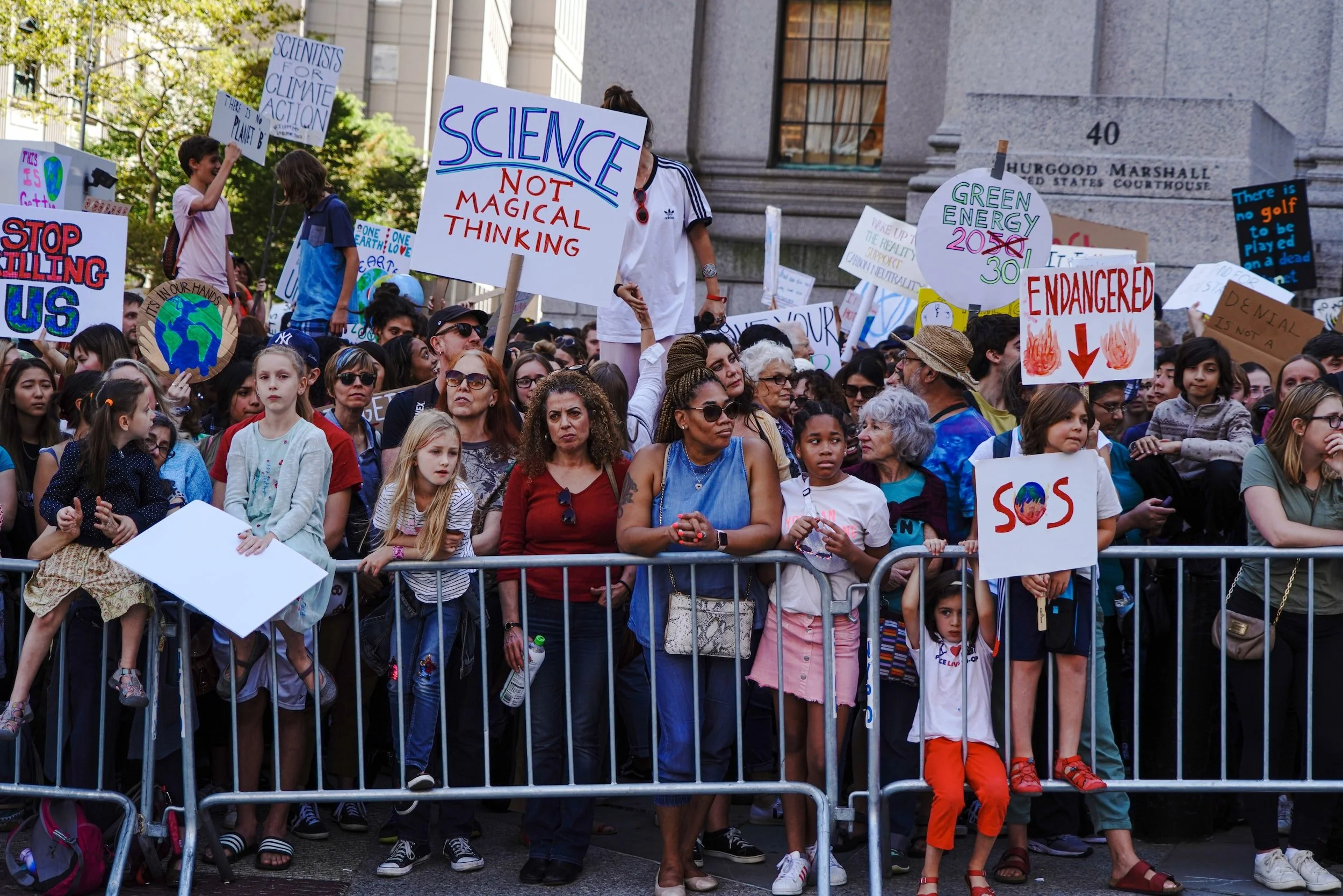Environmental Inequality
Over the past few years racial inequality has found itself once again in the headlines. Former students of residential schools run by the Catholic church across Canada have been speaking out on the decades long abuse experienced by indigenous pupils. The shocking murder of George Floyd electrified the world to action for Black Lives Matter. The hate crimes against people of Asian heritage rocketed with the outbreak of Covid-19. The conflict in Syria brought thousands of migrants to the gates of Europe and the US leading to far right backlash and scenes of racial hatred not seen since Enoch Powell’s infamous “rivers of blood” speech. The once bright image of a cosmopolitan, globalised and egalitarian society almost appeared to be disintegrating as inequality, the Covid-19 pandemic, a shaky economy and government parties dividing faster than bacteria began to jeopardise the harmony that communities across the globe have been striving to achieve. Yet, race-based inequality continues to reach its bony fingers into the structural inequalities we see and hear about in education, employment and general standard of living. Hidden away in plain view are the environmental inequalities that numerous minority ethnic and Indigenous communities are now experiencing as climate change lands on their doorstep and large polluting companies set up shop in their back yard.
What is Environmental Inequality?
Environmental inequality or environmental racism is “a form of systemic racism whereby communities of colour are disproportionately burdened with health hazards through policies and practices that force them to live in proximity to sources of toxic waste such as sewage works, mines, landfills, power stations, major roads and emitters of airborne particulate matter. As a result, these communities suffer greater rates of health problems attendant on hazardous pollutants” (World Economic Forum, 2020). Today, it would be easy to argue that environmental inequality has gone a step further with some minority ethnic and Indigenous communities being left to face most of the worst impacts of climate change. Whilst on a global level we see a distinct difference in climate and environmental policy aims as nation states varying in ethnic makeup from the homogeneity of Japan or South Korea to the melting pots of the US and Brazil fight it out to ensure continued economic growth whilst ignoring the more vulnerable members of their societies.
The racial disparities which can be observed at the top of society in our systems of governance continue to play out in policy dissemination and whilst the wealthy have increased access to resources those remaining in poorer countries have less ability to do so. Centuries of colonialism and inequality enshrined in law has given this inequality a racial dimension few wish to recognise, which has led to Archbishop Desmond Tutu giving it the name; “climate apartheid” (McCarthy and Goldman, 2021). In 2016, 90% of the American Congress was white, 96% of U.S. Governers were white and the top 10 wealthiest Americans were also white (Gómez and Peña, 2020). It then stands to reason that government officials and those individuals in a position of power who are faced with the decision of where to place a new hazardous waste plant are not going to want it in their backyard but will instead decide to place such facilities in communities who do not look like them or fall under the same tax bracket. Such assertions were recently backed by a landmark study by Dr Robert Bullard which found “race to be more important than socioeconomic status in predicting the location of the nation’s commercial hazardous waste facilities. He proved that African American children were five times more likely to suffer lead poisoning from proximity to waste than Caucasian children, while even black Americans making $50-60,000 a year were more likely to live in polluted areas than their white counterparts making $10,000” (World Economic Forum, 2020). Meanwhile, a UK government report found that “black British children are exposed to up to 30% more air pollution than white children” (GOV.UK, 2009)
So how is Environmental Inequality Effecting People of Colour?
Climate change is often viewed as an environmental issue and one which requires a ‘we’re all in this together’ style attitude. For this reason, the climate sphere has not traditionally played host to discussions around racism and inequality, yet the two areas are intrinsically linked. Take Zambia for example, the average carbon footprints are very low, coming in at just 0.36 tonnes per person per year which is less than one-tenth of the UK average. Zambia contributes very little in climate change causing carbon emissions and yet Zambia is facing environmental disaster with a prolonged drought which has left over a million people in need of food assistance in 2021 (Williams, 2022). Whilst droughts and floods can be difficult to attribute to climate change local evidence and simulated projections all indicate that rainfall will become more variable. Such occurrences seldom make the news, but for activists across the global south the justice implications are clear “historical and present-day injustices have both left black, Indigenous and people-of-colour communities exposed to far greater environmental health hazards than white communities. Those most affected by climate change are black and poor communities” (Williams, 2022). Leading many to question why more developed nations are able to focus on progressing towards a low carbon economy whilst in the meantime many developing nations are left struggling with the effects of climate change. Climate solutions are turning into climate exclusion as activists and representatives from across regions such as Africa are underrepresented during climate summits, which takes climate justice out of the equation. This is truly a global issue as "whether by conscious design or institutional neglect, communities of colour in urban ghettos, in rural 'poverty pockets', or on economically impoverished Native-American reservations face some of the worst environmental devastation” (Williams, 2022). With a topic as far reaching as this it can sometimes be helpful to look at a few case studies in nations which appear to have some of the highest levels of environmental inequality.
United States
For decades African American communities across the United States have “protested… pollution from coal factories, animal processing facilities, and garbage incinerators” which have posed significant risks to health and safety. Political leaders chose to ignore these protestors and failed to address the injustice “and now greenhouse gas emissions from those same industrial sectors are warming the planet to a dangerous degree” (McCarthy and Goldman, 2021). Pollution and emissions are just one aspect of the environmental inequality black people across America face daily, yet Hurricane Katrina played out the stark reality of this inequality in real time for the entire world to see. The chronically underfunded levee system in New Orlean’s broke under the weight of the ocean and flooded the city in 2005. Black residents of the area were up to four times more likely to die than white people in some neighbourhoods and they accounted for 80% of the people who lost their homes. Hurricane Harvey reinforced this when Black and Latinx were disproportionately harmed which foreshadowed the warning that the more severe and frequent hurricanes inevitably become that inequality could worsen also (McCarthy and Goldman, 2021). A study of wildfire risk in the US found that "wildfire vulnerability is spread unequally across race and ethnicity", with majority black, Hispanic or Native American districts facing 50% greater vulnerability compared with other groups” (Williams, 2022). Though President Biden has promised 40% of the federal government’s investments in climate and clean energy to be allocated to disadvantaged communities, advocacy groups are already criticising such plans as the tool used to determine which communities are disadvantaged does not take into account race as a factor (Miller, 2022). This is considered problematic as poverty is not the sole driver of vulnerability to climate change as race and racism continue to play a key, though underrepresented role.
The various ways in which climate change will affect these minority ethnic communities is overwhelming, particularly for indigenous people whose entire culture and identity is wrapped up in a degree of unity with the natural world. In Chefornak, a Yu’pik village near the western coast of Alaska the old school building is warping as the ground, once frozen solid, is thawing rapidly. At high tide children are being kept out of the school and the mixture of mould and damp is a clear health risk. The villagers have made requests for the federal government to build a new school on dry land as part of a wider relocation scheme for buildings in the area; however, agency after agency have responded with the same answer: no! Such issues are made yet more difficult as “Native Americans are also less likely to have flood insurance making it harder to rebuild” (Goodluck, 2021). “Indigenous nations across the U.S. have lost nearly 99% of their historical land base over time” (Treisman, 2021), the majority of the communities having been forced to settle on undesirable land by white settlers. Climate change is now making that marginal land uninhabitable with coastal erosion and storms forcing native communities inland. “In the Southwest, severe drought means the Navajo Nation is running out of drinking water. At the edge of the Ozarks, heirloom crops are becoming harder to grow, threatening to disconnect the Cherokee from their heritage” (Goodluck, 2021). “The Mojave tribe (along the Colorado River), for example, experiences an average 62 more days of extreme heat per year than it did on its historical lands. Nearly half of tribes experience heightened wildfire hazard exposure” (Treisman, 2021). The neglect that Native tribes experience as housing falls into disrepair and infrastructure fails to cut muster leaves communities struggling to cope in the wake of climate shocks and extreme weather events. Though various tribes are working to meet the challenges posed by climate change, President Biden, who recently spoke of repairing relations with tribal nations has announced few specific policies or actions aimed at reducing climate risk for Native communities. For these already dispossessed sovereign nations the looming threat of climate change is not only working as a reminder of a horrific past but also jeopardises their future and autonomy. Climate change is rapidly becoming the modern-day equivalent to the Trail of Tears.
United Kingdom
The UK has historically been one of the world’s most affluent nations; however, much of that status was built on the back of slavery, colonialism, classism and the exploitation of natural resources. In the aftermath of World War 2 the UK sent out a call across the colonies requesting workers to come to the mother country and contribute. That call was heard and in the ensuing decades the UK transformed from what was once a relatively homogenous society with a few small migrant enclaves in major cities and ports to a thriving, multicultural centre playing host to people from almost every continent on earth. However, the changing face of the UK has not always been well received and to this day you can scratch the surface of society to find a shocking level of inequality. “People of colour in Britain are more likely to live close to a waste incinerator. Black people in London are more likely to breathe illegal levels of air pollution than white and Asian groups and Black people living in England are nearly four times more likely than white people to have no access to outdoor space at home, whether it’s a garden or a balcony” (Craig, 2022). It is not just the lack of outdoor space that effects people of colour but also their higher chances of living in poor quality housing that is vulnerable to flooding and less equipped to deal with extreme heat (Naik and Maharasingam, 2021). Though deprivation and poverty play their part in increasing exposure to pollution in the UK, there is no denying that people of colour are often hit harder by environmental damage. In part, this is because people of colour in the UK are more likely to live in poverty in more economically deprived areas than their white counterparts, but also these same areas are most likely to suffer from environmental harms which puts people of colour at increased risk. Unfortunately, it is not just people of colour living in the UK who are being subjected to environmental inequality. Our consumerist behaviour is sending shocks across the globe as we ship waste off to the commonwealth or other nations who are willing to take the tonnes of consumerism we no longer have use for. Big industry and government continue to lag in tackling the plastic and fast fashion problem at the source whilst leaving developing nations under piles of pollutive, sometimes toxic trash. That same consumerism means that “by 12 January of every year, the average Brit’s emissions will have overtaken the annual per capita emissions of a further six African countries: Malawi, Ethiopia, Uganda, Madagascar, Guinea and Burkina Faso” (Naik and Maharasingam, 2021). The UK’s constant demands and consumerist behaviour also have dire consequences for Indigenous peoples and communities across the global South who are witnessing first-hand the destruction of the world’s rainforests and greatest natural resources to produce everything from palm oil to meat to timber for which they gain little to no monetary benefit. As companies and governments continue to chop down climate-critical ecosystems with impunity, polluting natural water sources and creating a real life equivalent to Fern Gully, people in the UK continue to shop with next day delivery often ignorant of the consequences of their behaviour. Though it may be true that diaspora communities living in the UK are also partaking in this high-level consumerist lifestyle and are in a small way contributing to climate change it remains for the most part the more affluent white communities who have done and continue to do the most damage.
Brazil
Environmental inequality is an issue that can plague any society and is not limited to Western nations in the global North. Brazil, home to the largest rainforest in the world otherwise known as the lungs of the planet, has been at the centre of discussions on climate change since their inception. In the last 50 years 17% of the Amazon rainforest has suffered from deforestation with scientists predicting a tipping point will be reach at 20-25%. It is not just loggers who are causing disruption as 20,000 illegal gold miners have invaded the Yanomami indigenous territory and reserve leaving natural water sources polluted and local biodiversity decimated (Trent, 2021). Brazil, like many other nations has struggled to handle the nefarious behaviour of its criminal underworld whether that be in the forest of favelas or trees and with successive governments failing to address social and economic issues the vast resources of the Amazon have often presented an opportunity to paper over the cracks. Though many are aware of the indigenous people living within the Amazon rainforest and throughout Brazil whose images surfaces at every climate summit and anti-deforestation discussion it can be easy to forget that Brazil is a multicultural, multi-ethnic society which harbours racism and inequality that has spread to every minority community.
The triad of climate change, colonialism and capitalism has given rise to the new term ‘CO2lonialism’ and with it a reminder of the deeply racialised reality of modern-day Brazil. “Afro-Brasileiros, black and mixed-race Brazilians make up 51% of the nation’s population and are significantly more exposed to poverty and targeted by discrimination, social exclusion, and exploitation than lighter-skinned parts of the population. 80 percent of Brazil’s richest one percent are white, and only 13% of non-white black and mixed-race Brazilians between the age 18 and 24 are currently enrolled in college” (Patel, 2019). Forced labour and exploitation levels are higher amongst non-white Brazilians who have in large numbers been recruited for soya plantations, farms, mines and mills across the Amazon which actively contributes to deforestation and thus to climate change. Racism and environmental destruction are almost inseparable in the context of Brazil and yet such communities receive little aid and are demonised even by those in the highest of public office. Former President Jair Bolsonaro has openly expressed his contempt for Afro-descendant Brazilians and indigenous people, criticising their inability ‘to speak our language’, their so-called lack of culture and questioning how and why indigenous people hold 13% of Brazil's territory which is according to Bolsonaro hindering economic development and profit (Patel, 2019). The previous, white-dominated Brazilian government has worked hard, not to push back climate change but instead to repeal the rights of Indigenous people. The rich mineral reserves which lie under the 436 Indigenous territories has left them at risk both from illegal activities that look to exploit the resources and to snuff out any opposition within Indigenous communities themselves. The Bolsonaro government policy towards Indigenous people was foolish in failing to recognise the indispensable role such communities have in biodiversity conservation and the revenue streams that could have been brought in through eco-tourism. Unfortunately, the quilombolas (communities descended from emancipated and escaped slaves) are unable to escape the racial undercurrent within Brazilian society and are finding their communities are coming under increasing pressure due to climate change. Drought is already forcing quilombolas to adapt in order to maintain their way of living, being forced to irrigate lands that were once lush and fertile. As many of these communities were set up by slaves who managed to escape the lethal plantations of the time many are located away from major water sources such as rivers which is only having ramifications today as they are beginning to experience desertification which makes access to water one of their major problems (Magnani, 2022). Quilombolas are in effect stuck between a rock and a hard place as they struggle to gain formal recognition due to historical inequalities whilst now facing the new challenge of climate change which disproportionately effects traditional communities. The years of invisibility experienced by Afro-Brazilians is felt yet more acutely today as the government fails to implement policies aimed at mitigating the impacts of climate change on these communities and instead allows mining companies and hydroelectric plants to infringe on their traditional lands.
Climate Justice and Challenging Environmental Inequality
“The nations of the Global North have effectively colonised the atmospheric commons” (Williams, 2022). In doing so they have enriched themselves with devastating consequences for the rest of the world and for all life on earth. Even when we account for the huge emissions of China or India, coming from their relatively recent industrialisation, it is still white people who have a greater cumulative impact on the climate. This is rooted in the historically disproportionate emissions of European colonial powers and settler colonies; meanwhile, the impacts of climate breakdown falls upon the global South. “The ongoing injustices of climate change are based in economic systems that privilege some people over others. Centuries of unequal power relationships have embedded this structural injustice, so that climate change echoes the power relationships of colonialism and empire. Independence may have brought political freedom, but many structural injustices remain. The flow of wealth is the same as it was under empire, with rich white countries extracting what they need from other countries” (Williams, 2022). This argument has been backed by UN Special Rapporteur on contemporary forms of racism, racial discrimination, xenophobia and related intolerance, Tendayi Achiume, who found that “existing international frameworks to address ecological crisis perversely entrench racial injustice” (Gilmore, 2022). Racially and ethnically marginalised groups continue to be structurally undermined in global policymaking, which makes a racial justice approach even more important. Including racial justice within the climate action programme takes nothing away and instead strengthens our ability to reduce greenhouse gas emissions and improve mitigation policies. In order to achieve this, we must ensure that communities such as the quilombolas are included and present in policy making spaces. “Governments must step up to the plate by committing funding to Indigenous Peoples’ territorial rights and forest management, especially in tropical countries. Multilateral trust funds, such as the Green Climate Fund (GCF) and the Global Environment Facility (GEF), must also increase their attention to, and funding for, Indigenous Peoples” (Kaimowitz, 2021). We must also ensure that Indigenous and tribal people are included in forest governance and are compensated for the environmental services they provide such as forest management. Greenpeace has also made some suggestions for how governments as well as normal people can make changes to improve climate justice;
“When it comes to money, technology and political power, centuries of exploitation have tilted the global playing field against poorer countries in the South of the world. This is why shifting power and resources back to these countries is absolutely key to tackling environmental injustice. Practical ways to achieve this include debt cancellation, reforms to international institutions, taxation that makes polluters pay, enactment of land-rights and the patent-free sharing of green technologies with the global South.
We need to move away from a wasteful economy that treats people and nature like resources to be mined for profit to one that’s grounded in restoring nature and allowing people to thrive. Space for new thinking is needed around alternative ideas to promote progress that is based on the collective well-being of both humans and nature. A just transition away from the unfair, extractive economy that dominates our society will not just tackle the impacts of the environmental emergency but will also start to address the hugely disproportionate injustices facing low income communities and people of colour” (Craig, 2022).
Climate justice and environmental inequality are not just linked to the top sphere of governments and international policy making organisations. Within the climate movement itself there must also be some recognition of the role of racism and that “racism and implicit bias is evident within environmentalism, therefore elevating racial justice within the movement has been a constant struggle, despite the scientific evidence that demonstrates that racial and ethnic minorities are the communities most at risk from climate change” (Dias, 2021). Mainstream environmentalists, as well meaning as they may be, continue to be white and middle/upper-class in character and therefore lack the experiences, insight and innovative thinking offered by people of colour. The environmental movement is to this day seeking solutions “from the very demographic that is most complicit with causing and benefiting from exploitation and environmental degradation” (Dias, 2021) and gives a white, Western face to activism that is simply inaccurate. This is not to say that environmental justice movements have not done good works as it has previously raised awareness of the plights of vulnerable populations through academic studies, media pressure campaigns and public activism whilst also making use of social media as well as civil disobedience and marches. “The European Union, where most documented cases of environmental racism affect the Romani people, has funded initiatives including the Environmental Justice Organisations, Liabilities and Trade project, which ran from 2011-2015 and brought together scientists and policymakers from 20 countries across the world to advance the case of environmental justice” (Beech, 2020). Though there are concerns that as environmental laws become more stringent developed countries will chose to migrate their dumping and polluting activities towards the global South this simply means that activist movements must be willing to take up arms with their global contingents. Inadvertently, such changes may lead to a more multi-ethnic, multicultural environmental justice movement. Sometimes environmental inequality can also be acted upon by the communities themselves with some important examples being:
“Indigenous peoples in the Central, South American and Caribbean regions are shifting their agricultural activities and their settlements to new locations which are less susceptible to adverse climate conditions. For example, Indigenous peoples in Guyana are moving from their savannah homes to forest areas during droughts and have started planting cassava, their main staple crop, on moist floodplains which are normally too wet for other crops.
In North America, some Indigenous groups are striving to cope with climate change by focusing on the economic opportunities that it may create. For example, the increased demand for renewable energy using wind and solar power could make tribal lands an important resource for such energy, replacing fossil fuel-derived energy and limiting greenhouse gas emissions. The Great Plains could provide a tremendous wind resource and its development could help to reduce greenhouse gas emissions as well as alleviate the management problem of the Missouri River hydropower, helping to maintain water levels for power generation, navigation, and recreation. In addition, there may be opportunities for carbon sequestration” (United Nations, 2022).
Environmental inequality may be a remnant of a colonial past, but it does not have to define our future. Both at home and abroad people of colour have stepped up to meet the challenges posed by climate change and it is the responsibility of the global North to join them in that fight. It can be easy to compartmentalise climate change and think only of reducing plastic waste or limiting our energy use. It can be simpler to post #blacklivesmatter on social media under images of African American communities struggling to access clean, safe water in Flint Michigan and share a video of Native American communities protesting oil pipelines and then go about your day without stopping to think about why such inequalities exist. Yet, it is our collective responsibility to both understand our past and make the effort to understand how that past effects us today. We can no longer live in ignorance or denial as people of colour face some of the worst environmental crises in history. We all face challenges, ensuring our children are well fed and educated, securing a roof over our heads and steady employment that keeps the wolves from the door. Now imagine having to contend with all these challenges whilst also worrying that every time your child steps outside to play they will be exposed to hazardous levels of air pollution or that they will miss out on education as the sea rises and washes their school away. Imagine knowing that your government is actively working to strip away your rights to land and is allowing the destruction of the natural spaces you hold so dear. Imagine knowing that you have done nothing to contribute the problem of climate change and yet you are facing droughts, flooding, and possible displacement. This is environmental inequality, and we must act today to bring it to an end.
Works Cited
Beech, Peter. “What is Environmental Racism And How Can We Fight It?” The World Economic Forum, 31 July 2020, https://www.weforum.org/agenda/2020/07/what-is-environmental-racism-pollution-covid-systemic/.
Craig, Mya. “Why we can't tackle the environmental emergency without tackling racism.” Greenpeace UK, 21 July 2022, https://www.greenpeace.org.uk/news/environmental-racism-report-summary/.
Dias, Keila Mcfarland. “Racial justice, intersectionality, and the environmental movement: a conversation with activist Paulo Ricardo — Human Rights Pulse.” Human Rights Pulse, 8 February 2021, https://www.humanrightspulse.com/mastercontentblog/racial-justice-intersectionality-and-the-environmental-movement-a-conversation-with-activist-paulo-ricardo.
Gilmore, Kate. “The global climate crisis is a racial justice crisis: UN expert.” OHCHR, 31 October 2022, https://www.ohchr.org/en/press-releases/2022/11/global-climate-crisis-racial-justice-crisis-un-expert.
Gómez, Myrriah, and Victoria Peña. “The complicated history of environmental racism: UNM Newsroom.” UNM Newsroom, 4 August 2020, http://news.unm.edu/news/the-complicated-history-of-environmental-racism.
Goodluck, Kalen. “Dispossessed, Again: Climate Change Hits Native Americans Especially Hard (Published 2021).” The New York Times, 28 October 2021, https://www.nytimes.com/2021/06/27/climate/climate-Native-Americans.html.
GOV.UK. “UK notification to the European Commission to extend the compliance deadline for meeting PM10 limit values in ambient air to 2011.” August 2009, https://web.archive.org/web/20110710192634/http://www.endsreport.com/docs/20090820a.pdf.
Kaimowitz, David. “Guest Article: Indigenous Peoples Must be Central to Tackling the Climate Crisis | SDG Knowledge Hub | IISD.” SDG Knowledge Hub, 25 October 2021, https://sdg.iisd.org/commentary/guest-articles/indigenous-peoples-must-be-central-to-tackling-the-climate-crisis/.
Magnani, Amanda. “Black communities in Brazil face both extreme drought and racism.” Climate Tracker, 18 January 2022, https://climatetracker.org/black-communities-brazil-climate-change-quilombolas/.
McCarthy, Joe, and David Goldman. “Why Is Climate Change a Racial Justice Issue?” Global Citizen, 20 April 2021, https://www.globalcitizen.org/en/content/why-is-climate-change-a-racial-justice-issue/.
Miller, Brittney J. “Racism drives environmental inequality — but most Americans don’t realize.” Nature, 14 June 2022, https://www.nature.com/articles/d41586-022-01283-0.
Naik, Aakash, and Aiyan Maharasingam. “WATCH: Is climate change racist?” Greenpeace UK, 1 October 2021, https://www.greenpeace.org.uk/news/watch-is-climate-change-racist/.
Patel, Dipa. “The Racial Dimensions Of “Nature”: Environmental Justice and CO2lonialism in Brazil.” LSE Blogs, 9 April 2019, https://blogs.lse.ac.uk/internationaldevelopment/2019/04/09/the-racial-dimensions-of-nature-environmental-justice-and-co2lonialism-in-brazil/.
Treisman, Rachel. “Forced relocation left Native Americans more vulnerable to climate change.” NPR, 2 November 2021, https://www.npr.org/2021/11/02/1051146572/forced-relocation-native-american-tribes-vulnerable-climate-change-risks.
Trent, Steve. “Brazil must do more to protect its….” Environmental Justice Foundation, 22 March 2021, https://ejfoundation.org/news-media/brazil-must-do-more-to-protect-its-people-forests-and-the-planet.
United Nations. “Climate Change | United Nations For Indigenous Peoples.” the United Nations, Department of Economic and Social Affairs Indigenous Peoples, 2022, https://www.un.org/development/desa/indigenouspeoples/climate-change.html.
Williams, Jeremy. “Why climate change is inherently racist.” BBC, 25 January 2022, https://www.bbc.com/future/article/20220125-why-climate-change-is-inherently-racist.
World Economic Forum. “What is Environmental Racism And How Can We Fight It?” The World Economic Forum, 31 July 2020, https://www.weforum.org/agenda/2020/07/what-is-environmental-racism-pollution-covid-systemic/.


